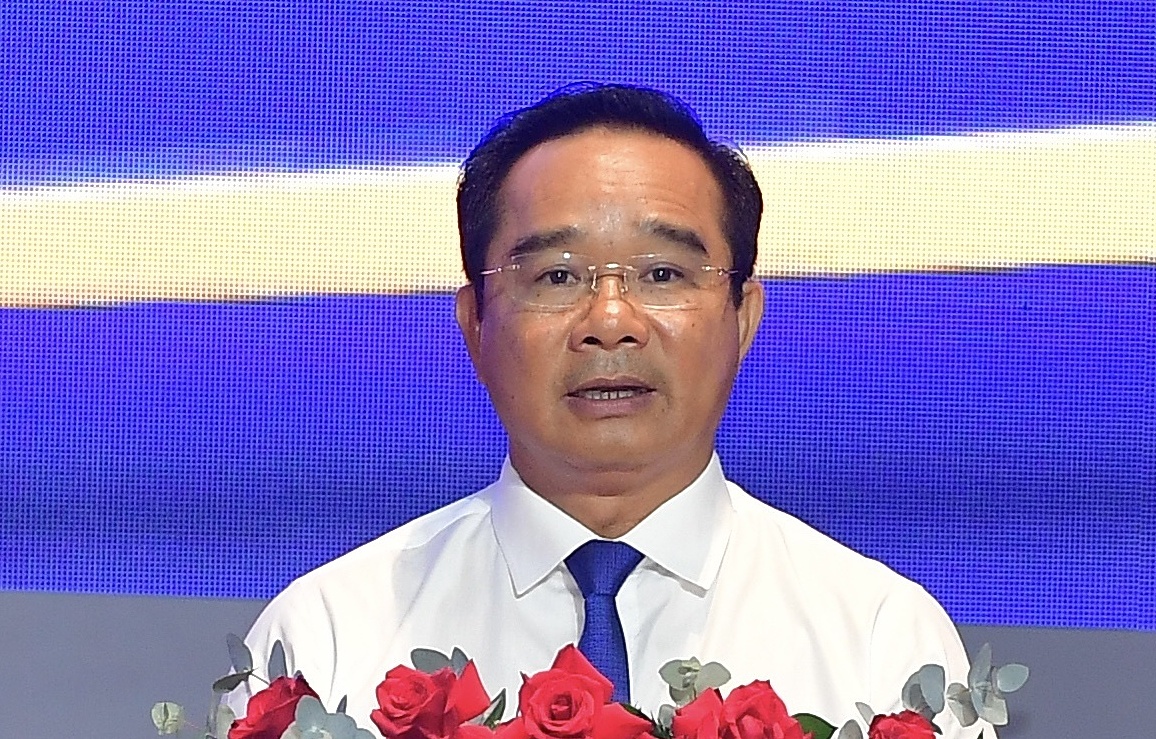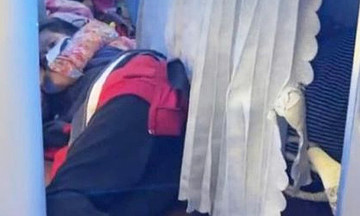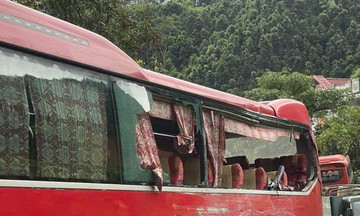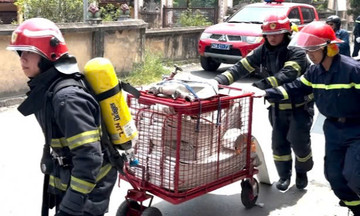Chairman of the Ho Chi Minh City People's Committee, Nguyen Van Duoc, made the proposal at the 6th meeting of the Southeast Regional Coordination Council on 2/8. He stated that after the administrative merger, many localities have large populations, but the leadership structure at the grassroots level remains unchanged, leading to an overload of work.
Ho Chi Minh City proposes adding a vice chairman to the People's Committee of populous wards and communes, similar to a previously applied special mechanism. Under this mechanism, localities with over 50,000 residents received an additional vice chairman; Ho Chi Minh City appointed 48 additional vice chairmen.
 |
Chairman of the Ho Chi Minh City People's Committee, Nguyen Van Duoc, speaking at the meeting on 2/8. Photo: Thanh Tung |
Chairman of the Ho Chi Minh City People's Committee, Nguyen Van Duoc, speaking at the meeting on 2/8. Photo: Thanh Tung
Currently, each ward and commune People's Committee has only two vice chairmen, one of whom also serves as director of the Public Administration Service Center. Meanwhile, some localities have populations exceeding 200,000, such as Hiep Binh Ward with over 215,600 residents, Tang Nhon Phu Ward with over 208,200, Ba Diem Commune with nearly 204,300, and Di An with over 228,000.
In addition, the city proposes increasing the authority of the ward level, such as authorizing the deputy director of the Public Administration Service Center to approve certain types of documents, reducing the burden on the administrative apparatus.
Standing Deputy Prime Minister Nguyen Hoa Binh said the Ministry of Home Affairs is researching and finalizing the proposal. He acknowledged the fact that many officials currently have to sign hundreds, even thousands, of documents daily, leaving them little time for other tasks.
At the meeting, the chairman of the Ho Chi Minh City People's Committee also proposed developing a new resolution to replace Resolution 98 to address issues arising during its implementation. The city requests a comprehensive assessment and review of policy mechanisms such as incentives for strategic investors, streamlining planning procedures for priority projects, and expanding industries and sectors to attract investment.
For projects facing obstacles due to unsuitable regulations, Ho Chi Minh City requests collaboration with relevant ministries and sectors to submit legal adjustments to the government. The city also requests a mechanism to appoint investors who have reached cooperation agreements with strategic partners instead of re-tendering.
Furthermore, Ho Chi Minh City proposes developing special policies for the free trade zone associated with Cai Mep Lower Port (formerly Ba Ria - Vung Tau). The Ministry of Finance is leading the development of the project, and the city hopes the government will soon approve it for implementation in 2025.
After merging with Binh Duong and Ba Ria - Vung Tau, Ho Chi Minh City now has 168 wards, communes, and special zones, including 53 wards and communes with populations over 100,000 and 4 wards and communes with populations over 200,000.
The Southeast Regional Coordination Council was established in 7/2023, chaired by Prime Minister Pham Minh Chinh. Before the rearrangement, the region had 6 provinces and cities; after 1/7/2025, it has 3: Ho Chi Minh City, Dong Nai, and Tay Ninh.
Le Tuyet












